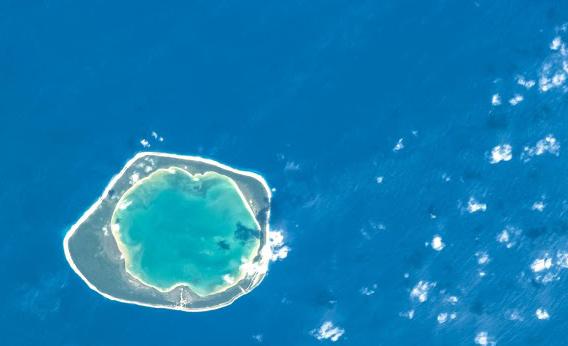Create a free profile to get unlimited access to exclusive videos, sweepstakes, and more!
Space Travel Takes Atoll

Luca Parmitano is an Italian astronaut currently on board the International Space Station, sailing over the world at a height of 415 kilometers (257 miles). Pretty much every day he tweets several beautiful pictures of our planet heâs taken from his orbital perch.
On Friday, he posted one that possessed both a distinct oddness as well as surpassing beauty, and I had to share it:
He identified it as an atoll in French Polynesia, but that made me smile, as there are a great many of them in the south Pacific, so that doesn't narrow things down much. However, shortly after Parmitano posted it, Peter Caltner on Twitter identified it as the island of Niau.
With a name to go with it, I was able to find out quite a bit about it. For one thing, itâs tinyâonly 10 km (6 miles) across its longest width. The lagoon in the middle is extremely salty and doesnât mix much with the ocean around it.
Atolls form when islands poke through the ocean surface and coral grows around them. The middle of the island can subside, leaving behind a ring of coral just a few meters high above the waterâs surface. This process can take millions of years!
As small as Niau is, there are people on itâfewer than 150. In the photo north is actually down; at the north part of the island you can see a thin, straight line that marks where the people live, and around it counterclockwise a bit you can see the islandâs airport partially obscured by clouds. (Itâs clearer in an earlier photo taken by the European Space Agencyâs Proba satellite.) It seems like it would be a fascinating place to visit and spend a few days; for example there's a rare bird there called the Tuamotu kingfisher that may be on the verge of going extinct. Plus, seriously, look at it: It's gorgeous.
I was impressed when I looked at it on Google Maps. Click the link, then zoom out a couple of steps. The atoll really is very small and lost among the bigger ones; itâs amazing Caltner was able to identify it. To think that such treasures exist on Earth, and if it werenât for the Internet, for Twitter, for astronauts, and for others of us on the ground to help point them out, we might live our whole lives and never even know they exist.
As I look at the picture, I am struck as I always am when I see such a thing: What else are we missing?


























